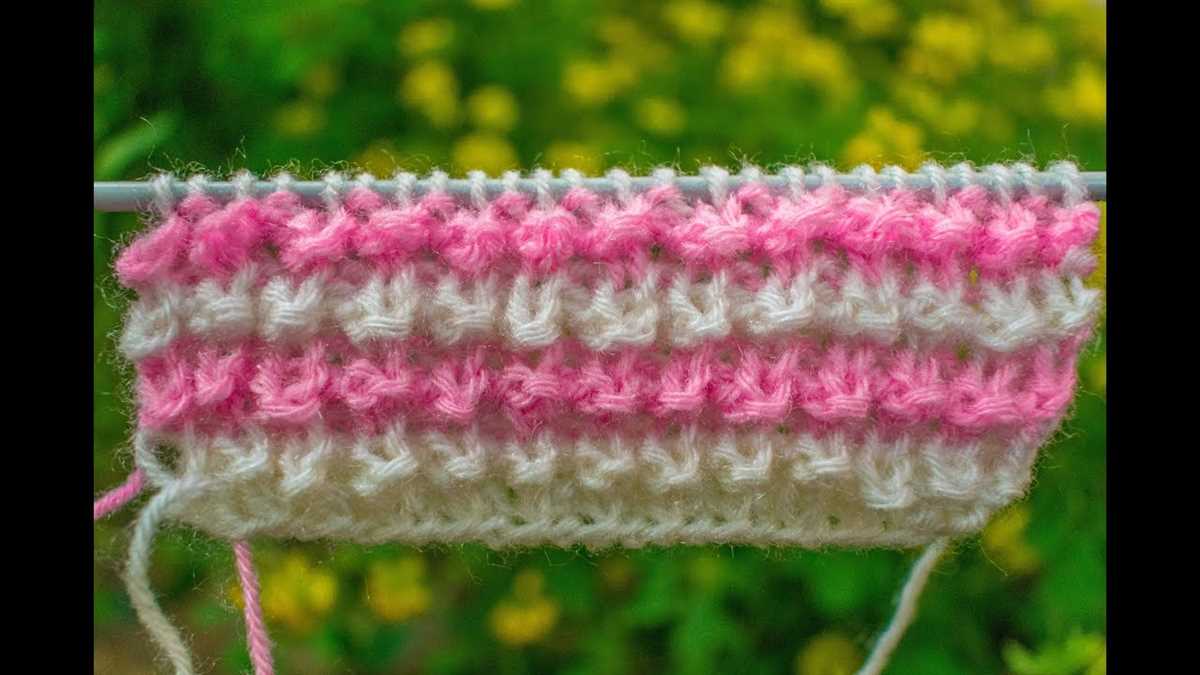
Knitting is a wonderful craft that allows you to create beautiful and functional items with just a few simple tools. One of the most popular techniques in knitting is two color knitting, also known as stranded knitting or Fair Isle knitting. This technique involves working with two different colors of yarn to create intricate and stunning designs.
Simple two color knitting patterns are a great way for beginners to learn and practice this technique. These patterns typically involve just two colors and use basic stitches like knit and purl. They are perfect for experimenting with different color combinations and creating unique and personalized projects.
There are many simple two color knitting patterns available, from scarves and hats to blankets and sweaters. Whether you’re a beginner or an experienced knitter, there’s sure to be a pattern that suits your skill level and personal style. With just a little practice, you’ll be able to create beautiful colorwork designs and impress your friends and family with your knitting skills.
What are Simple Two Color Knitting Patterns?
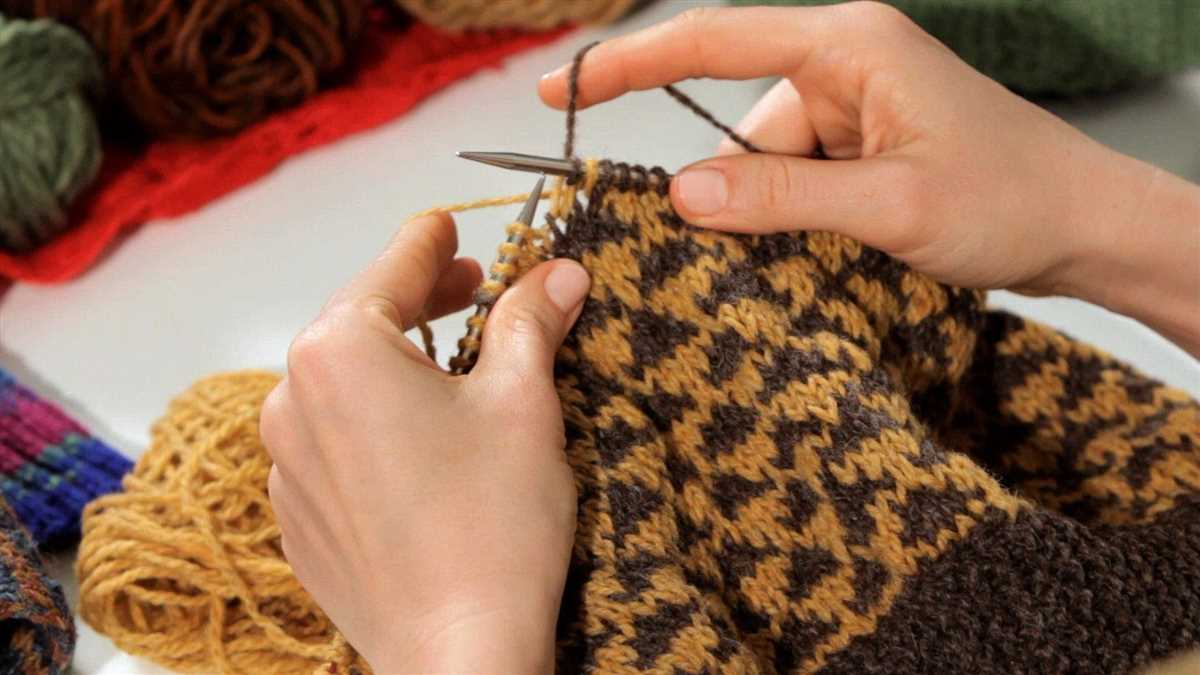
Simple two color knitting patterns are designs that involve using two different colors of yarn to create a pattern or design in a knitted project. These patterns are a great way for beginners to practice colorwork and create beautiful and eye-catching projects.
One popular type of simple two color knitting pattern is the striped pattern. This pattern involves alternating between two colors of yarn to create vertical, horizontal, or diagonal stripes in the finished project. The stripes can be wide or narrow and can be worked in a variety of stitch patterns, such as garter stitch, stockinette stitch, or ribbing.
In addition to striped patterns, there are also geometric patterns that can be created using two colors. These patterns often involve repeating shapes or motifs, such as chevrons, diamonds, or zigzags. These patterns can be worked using a combination of knit and purl stitches, or more complex techniques such as increases and decreases.
Simple two color knitting patterns can be used to create a wide range of projects, from scarves and hats to sweaters and blankets. They can also be applied to smaller projects like mittens or socks. The key to successfully knitting these patterns is to ensure that the tension is even between the two colors and that the floats are not too loose or tight. With practice and patience, beginners can quickly master simple two color knitting patterns and create stunning projects.
Why Should You Try Simple Two Color Knitting Patterns?
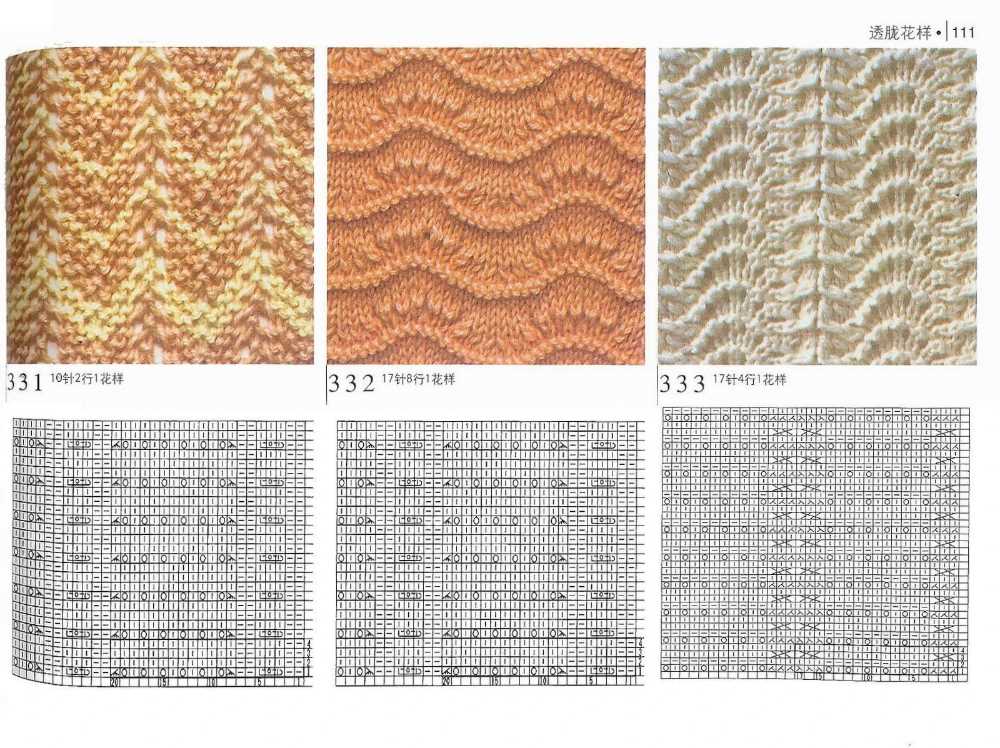
If you’re a knitter looking for a new project or a beginner seeking to improve your skills, simple two color knitting patterns might be just what you need. These patterns offer a range of benefits and can be a great way to expand your knitting repertoire. Here are a few reasons why you should consider trying your hand at two color knitting.
1. Beautiful Contrast: One of the main reasons people are drawn to two color knitting is the beautiful contrast it creates. By using two different colors, you can achieve stunning patterns and designs that stand out. Whether you opt for a classic combination or experiment with bold color choices, the contrasting colors add visual interest to your knitted items.
2. Versatility: Two color knitting patterns can be used to create a wide variety of items, from scarves and hats to sweaters and blankets. This versatility means you can always find a project that suits your needs and preferences. There are endless possibilities for combining different stitches and color combinations to create unique and personalized pieces.
3. Skill Development: Simple two color knitting patterns are an excellent way to develop your knitting skills. They often involve basic techniques such as color changes, striping, or stranded knitting. By practicing these techniques, you can improve your knitting speed, tension control, and overall dexterity. As you gain confidence with two color knitting, you can progress to more complex patterns and challenge yourself further.
4. Meditative and Relaxing: Knitting, in general, is known for its calming and therapeutic effects. Two color knitting patterns offer an extra layer of relaxation as you focus on working with different colors and stitching patterns. The repetitive motions can help relieve stress and promote mindfulness. Knitting also provides a sense of accomplishment as you see your project take shape, which can boost your mood and well-being.
In conclusion, simple two color knitting patterns offer numerous benefits for knitters of all skill levels. They provide beautiful contrast, versatility, and an opportunity to develop your knitting skills. Additionally, engaging in two color knitting can be a soothing and rewarding activity that enhances your overall well-being. So why not give it a try and explore the world of two color knitting? You might discover a new passion and create stunning knitted items along the way.
Choosing Yarn for Simple Two Color Knitting Patterns
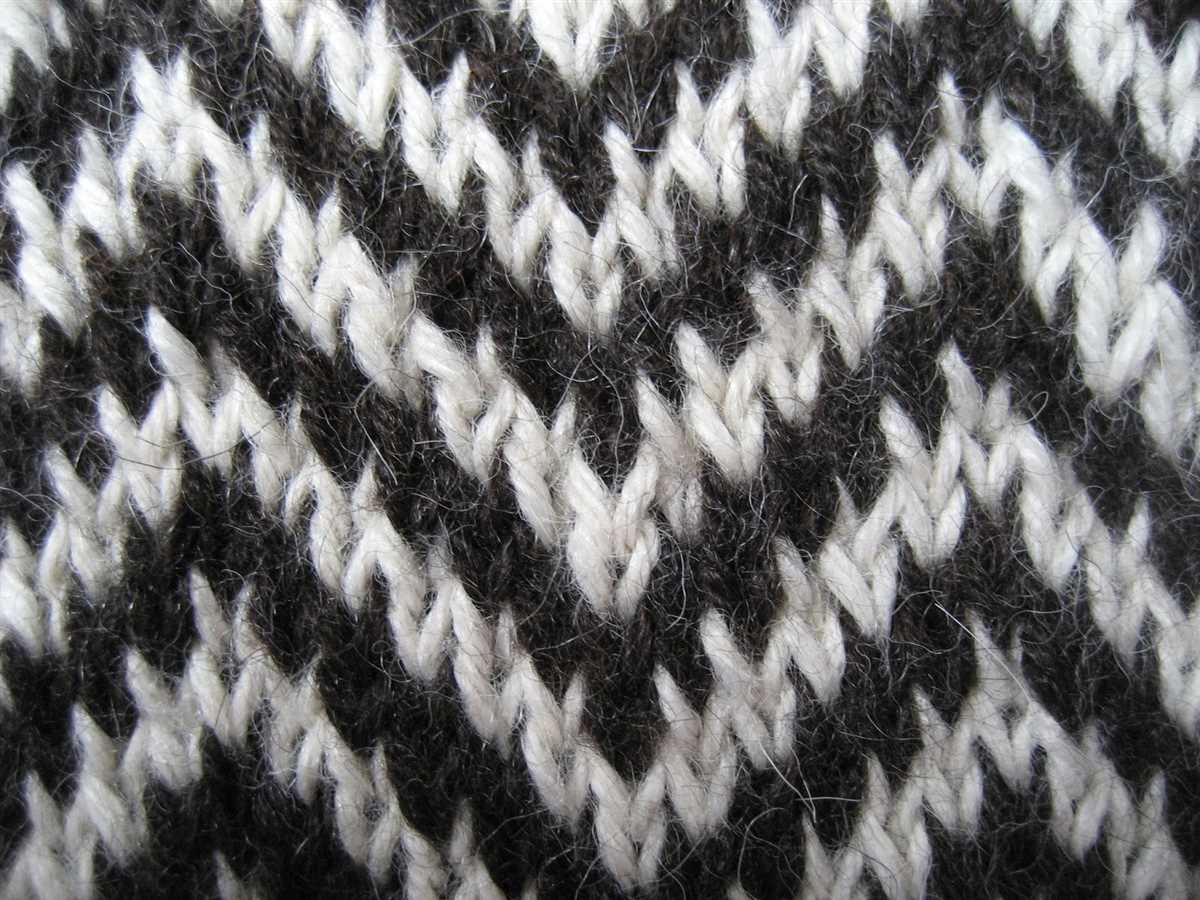
When it comes to knitting simple two color patterns, choosing the right yarn is crucial. The yarn selection will determine the overall look and feel of your finished project, as well as its durability and comfort. Here are some factors to consider when picking yarn for your next two color knitting project.
Weight and Fiber Content
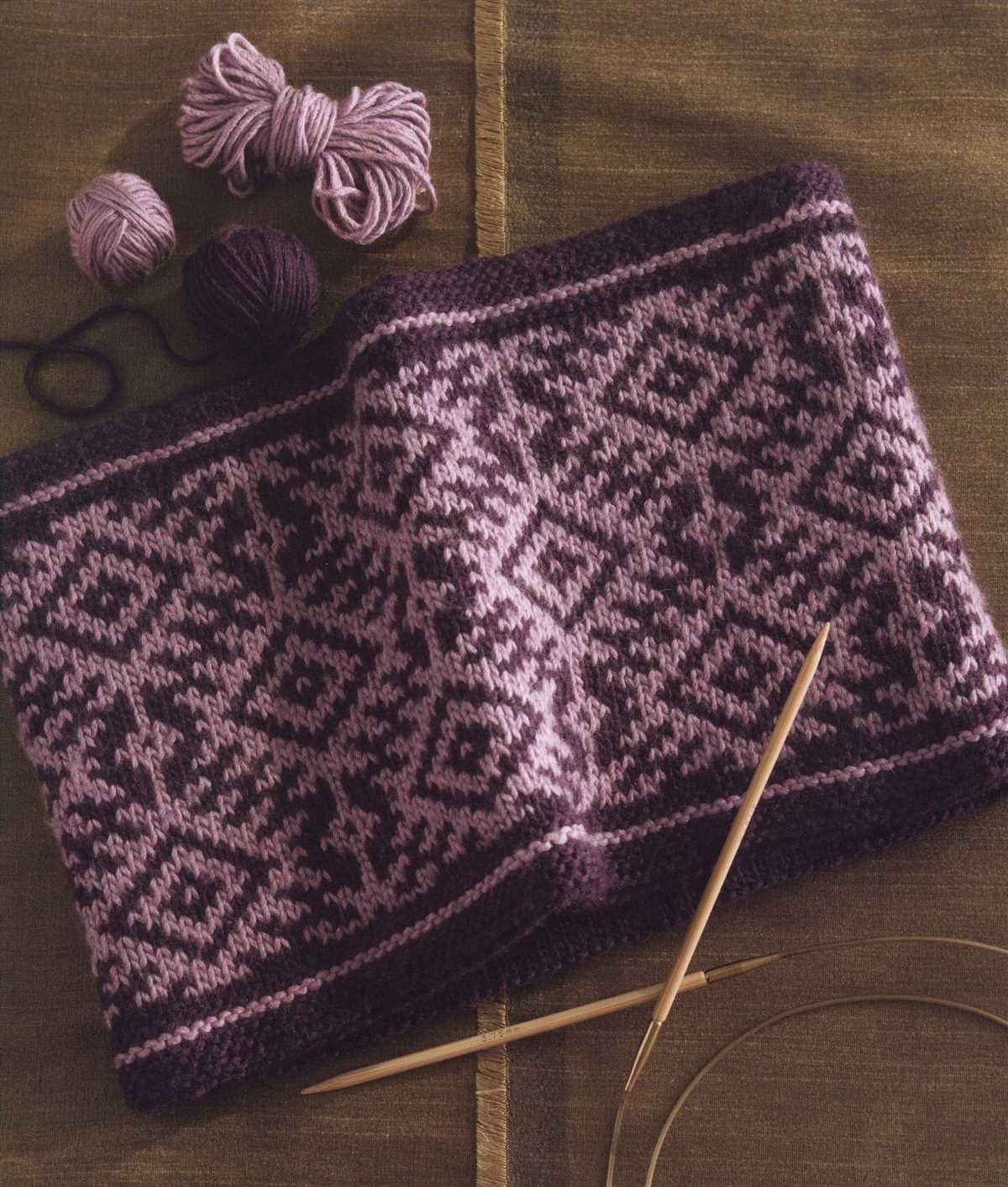
The weight of the yarn will affect the drape and warmth of the finished fabric. For two-color patterns, it’s best to choose yarns with similar weights, so that the colors will blend seamlessly together. Additionally, consider the fiber content of the yarn. Natural fibers like wool or cotton tend to hold color better and provide more warmth, while synthetic fibers may have a shinier or smoother appearance.
Color Choice
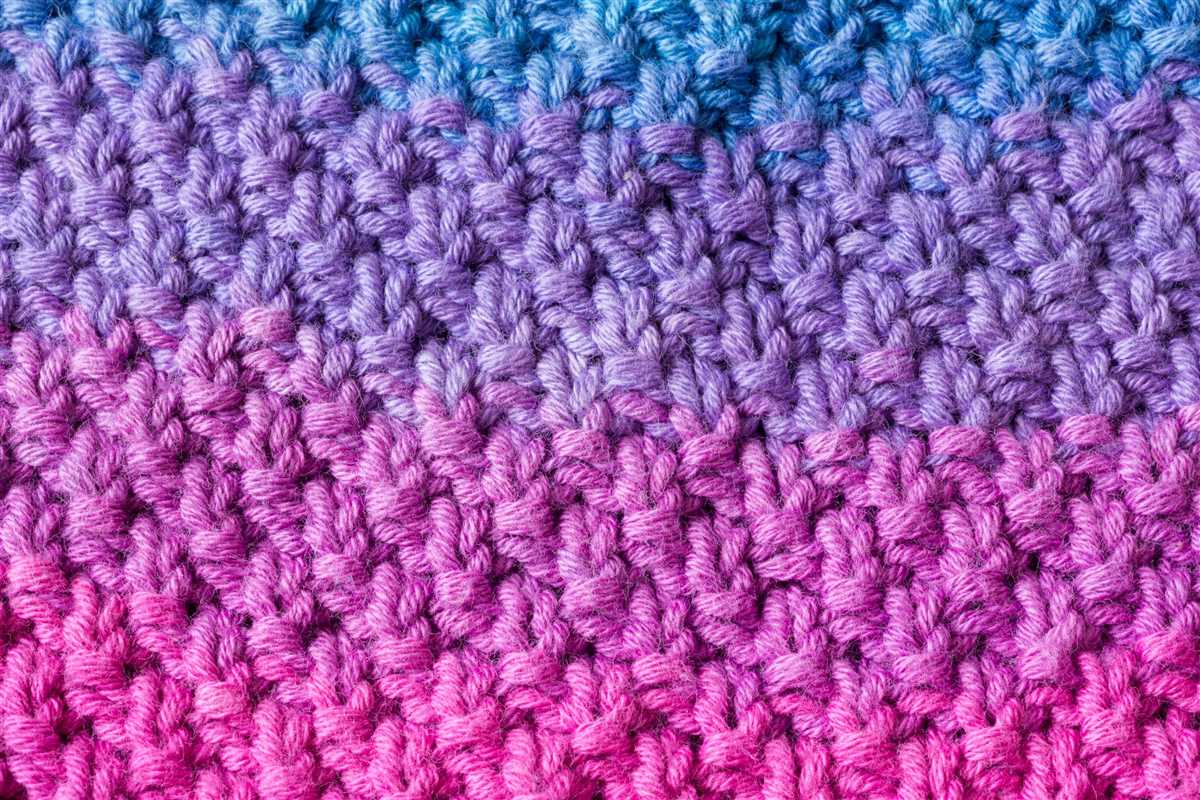
When selecting yarn for a two-color knitting project, it’s important to consider the contrast between the two colors. You want the colors to be different enough to create a noticeable pattern, but not so different that they clash or overpower each other. A good guideline is to choose a light color and a dark color, or a color with a high saturation and a color with a lower saturation.
Another thing to consider is the color distribution in the yarn. Some yarns have long color repeats, which can create interesting stripes or color-block sections in your project. Others have short color repeats, which result in a more speckled or variegated look. Consider how the color distribution will complement the pattern you are knitting.
Tools and Materials for Simple Two Color Knitting Patterns
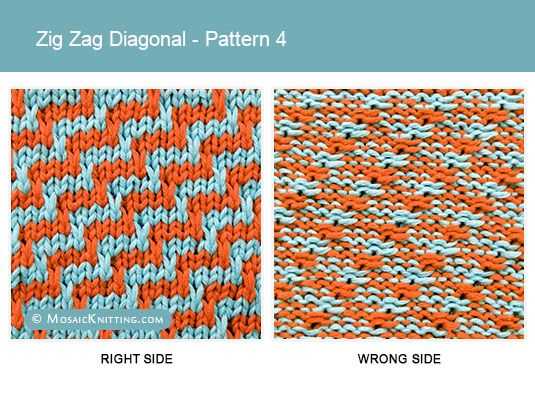
When it comes to knitting, having the right tools and materials can make all the difference in creating beautiful and detailed patterns. For simple two color knitting patterns, there are a few essential items you’ll need to get started.
Needles: The type and size of needles you use will depend on the yarn and the pattern you’re working on. For two color knitting, it’s important to use circular or double-pointed needles, as you’ll be working with two different yarn colors at the same time. Choose needles that are comfortable to hold and have a smooth surface to prevent snagging.
Yarn: For two color knitting patterns, you’ll need two different colors of yarn to create the contrast and design. It’s important to choose yarns that are similar in weight and composition to ensure an even tension and consistent look. You can opt for different shades of the same color or choose contrasting colors for a more vibrant effect.
Stitch markers: Stitch markers are small rings or clips that help you keep track of specific stitches or pattern repeats. They can be especially useful in two color knitting patterns, where you may need to switch between colors or keep track of different stitch patterns. Place a stitch marker at the beginning of a round or at key points in the pattern to make it easier to follow along.
Tapestry needles: Tapestry needles, also known as yarn needles, are used for seaming pieces together and weaving in loose ends. They have a large eye that can accommodate yarn and a blunt tip that won’t split the fibers. In two color knitting, you may need to weave in the ends of both colors, so having a tapestry needle on hand is essential.
Pattern: Last but not least, you’ll need a pattern to guide you through the two color knitting process. Look for patterns specifically designed for two color knitting or choose a simple pattern that incorporates basic colorwork techniques. Make sure to read the pattern carefully before starting to ensure you understand the instructions and have all the necessary materials.
With the right tools and materials, you’ll be ready to dive into the world of simple two color knitting patterns. Experiment with different color combinations and techniques to create unique and beautiful designs.
Basic Techniques for Simple Two Color Knitting Patterns
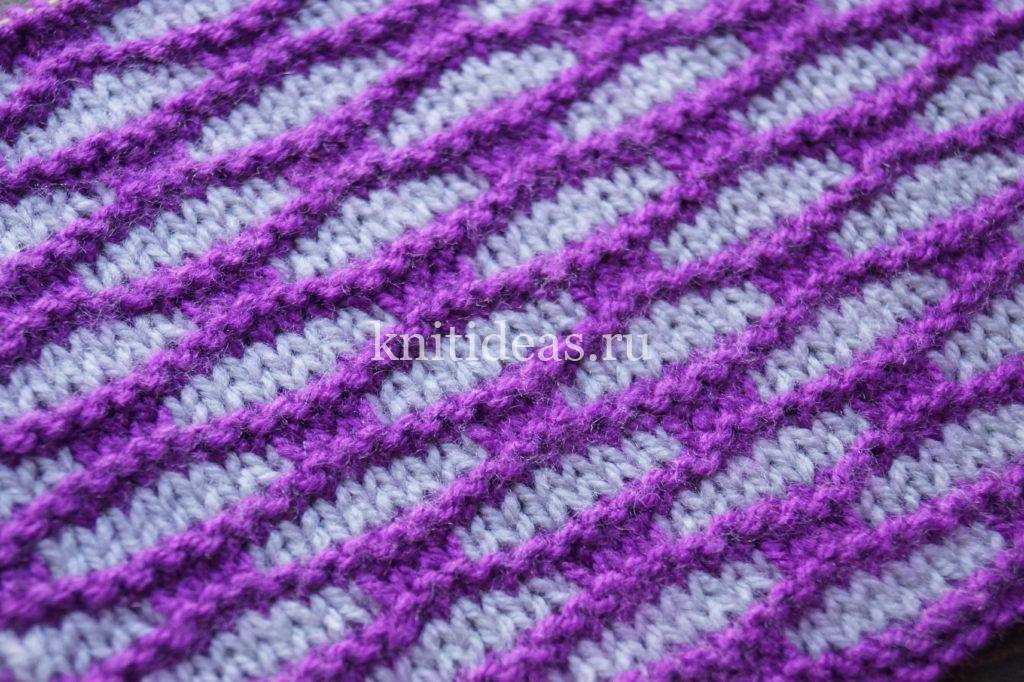
Knitting with two colors can add depth and complexity to your projects, and it’s easier than you might think. Whether you’re a beginner or more experienced knitter, there are a few basic techniques that will help you create beautiful two color patterns.
1. Stranding: Stranding is the most common technique used in two color knitting. With this technique, you hold both colors of yarn in your non-dominant hand and alternate between them as you knit. When one color is not in use, it is carried along the back of the work, creating floats. It’s important to keep the floats loose enough so that they don’t pull the fabric, but not too loose that they become visible on the front.
2. Intarsia: Intarsia is another technique used for two color knitting, and it involves using separate balls or bobbins of yarn for each color section. Unlike stranding, intarsia creates blocks of color without floats. When changing colors, you twist the two yarns together to prevent any holes from forming. This technique is great for larger areas of color or for creating geometric patterns.
3. Duplicate Stitch: If you want to add a pop of color to an already completed project, duplicate stitch is a great option. With this technique, you use a different colored yarn to stitch over the existing stitches, essentially adding the second color after the fact. It’s a simple and effective way to create small accents or designs on your knitting.
4. Fair Isle Knitting: Fair Isle knitting is a traditional technique that involves knitting with two colors in a single row. Similar to stranding, you carry the unused color along the back, but Fair Isle creates smaller floats and typically has a more intricate pattern. This technique requires some practice to maintain even tension across the work, but the results are stunning.
These are just a few of the basic techniques you can use to create simple two color knitting patterns. Experiment with different combinations and techniques, and don’t be afraid to get creative with your designs. With practice, you’ll be able to master the art of two color knitting and create unique and beautiful projects.
Beginner-Friendly Simple Two Color Knitting Patterns
If you are new to knitting and want to start exploring two-color knitting patterns, there are plenty of beginner-friendly options to choose from. These patterns typically use only two colors of yarn and simple stitches, making them perfect for those who are just starting out with colorwork.
1. Striped Scarf: One of the easiest two-color knitting patterns for beginners is a simple striped scarf. To create this pattern, you can alternate between two different colors of yarn, knitting each color for a set number of rows or stitches. This pattern is great for practicing tension control and getting comfortable with working with two colors at once.
2. Garter Stitch Dishcloth: Another beginner-friendly option is to create a garter stitch dishcloth with two contrasting colors of yarn. The garter stitch is a simple stitch pattern that involves knitting every row, and by using two different colors, you can create a beautiful striped effect. This project is quick to knit up and a great way to practice basic knitting skills.
3. Color Block Hat: If you want to take your two-color knitting skills to the next level, try knitting a color block hat. This pattern involves switching between two colors to create distinct color blocks or stripes. You can choose any color combination you like, and experimenting with different color placements can create endless design possibilities.
4. Fair Isle Headband: Fair Isle knitting is a technique that involves creating intricate colorwork patterns using two or more colors. While it may seem complicated, there are beginner-friendly Fair Isle patterns available, such as a Fair Isle headband. This project typically features a simple repeating pattern and allows you to practice working with multiple colors within a smaller project.
By starting with these beginner-friendly two color knitting patterns, you can gain confidence in working with multiple colors and explore the world of colorwork knitting. Remember to start with simple patterns and gradually increase the complexity as you become more comfortable with the techniques involved.
Intermediate Simple Two Color Knitting Patterns
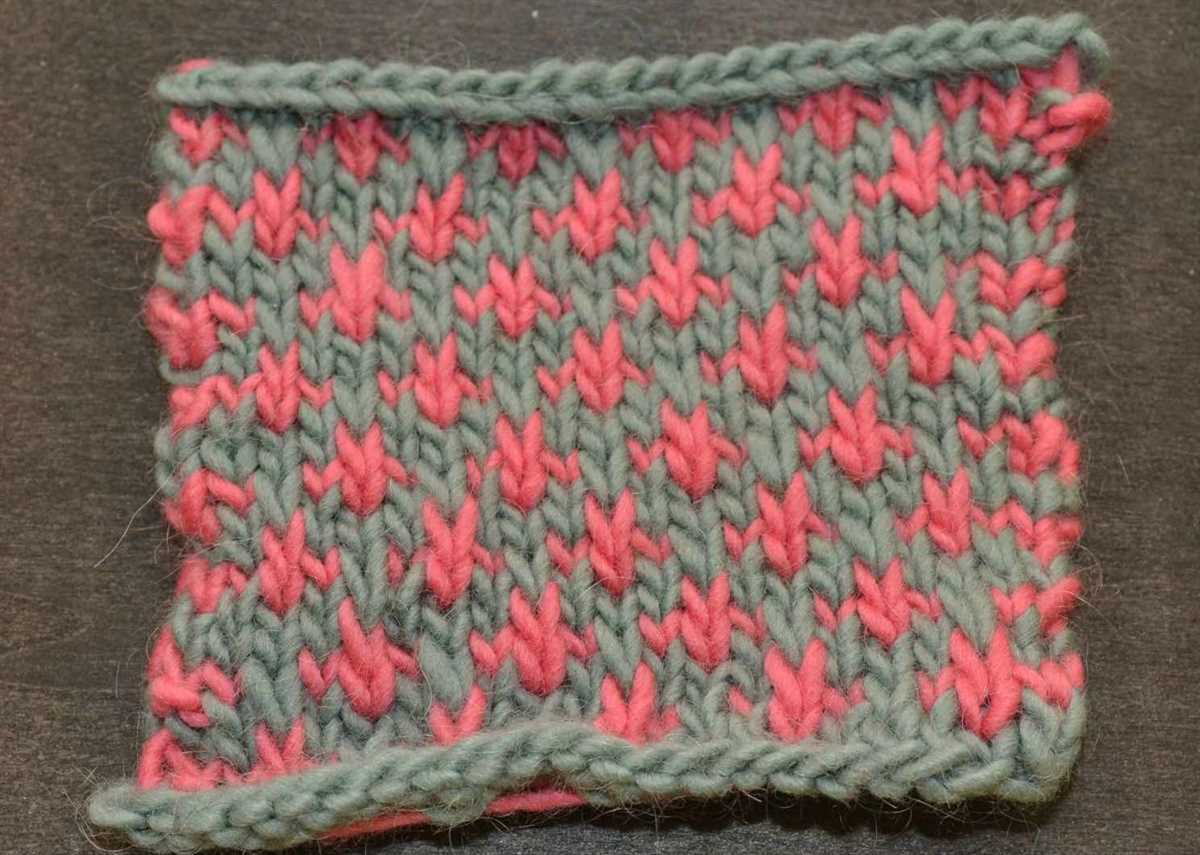
Are you an intermediate knitter looking for simple two color knitting patterns to challenge your skills? Look no further! In this article, we will explore a variety of intermediate-level patterns that will help you improve your colorwork technique while creating beautiful projects.
Fair Isle Hat: The Fair Isle technique involves knitting with two colors in a row to create intricate patterns and designs. This intermediate-level hat pattern is perfect for practicing Fair Isle knitting. With a combination of simple geometric shapes and bold colors, you’ll create a stunning accessory that will keep you warm and stylish during the colder months.
Color Block Scarf: If you’re looking for a versatile and trendy accessory, a color block scarf is a great option. This pattern allows you to experiment with different color combinations and create a unique design that suits your style. Knit in garter stitch, this intermediate-level scarf is a great project to practice your colorwork skills while keeping you cozy.
Stranded Mittens:
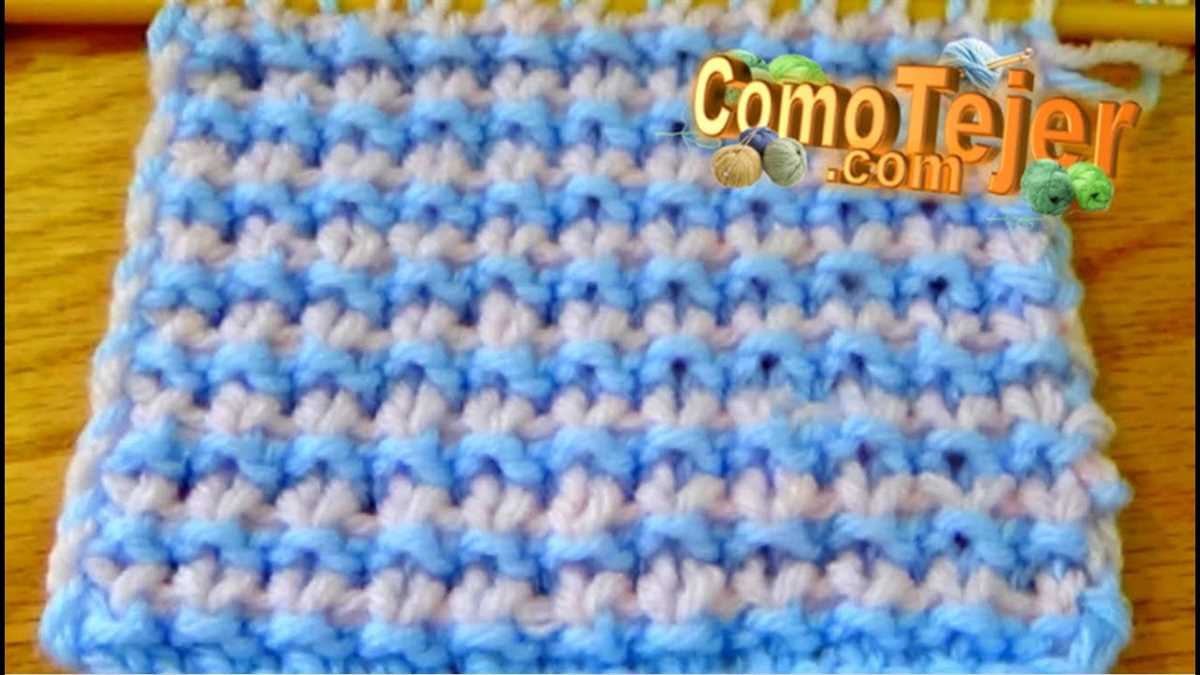
Another intermediate-level pattern to challenge your colorwork skills is a pair of stranded mittens. Stranded knitting, also known as Nordic or Norwegian knitting, involves knitting with two colors in the same row, creating a warm and durable fabric. This pattern features a traditional stranded design, with intricate patterns and motifs. Not only will you have a cozy pair of mittens, but you’ll also have a beautiful handmade accessory to show off.
- Tip: When knitting with two colors, make sure to keep the floats, or strands of yarn, on the back of your work loose. This will ensure that your fabric doesn’t pucker and create an even tension.
- Caution: Stranded knitting can be more time-consuming than knitting with a single color, so it’s important to be patient and take your time.
With these intermediate-level simple two color knitting patterns, you’ll be able to challenge your skills and create beautiful and unique projects. Whether you choose to knit a Fair Isle hat, a color block scarf, or stranded mittens, you’ll be sure to impress with your colorwork technique.
Advanced Simple Two Color Knitting Patterns
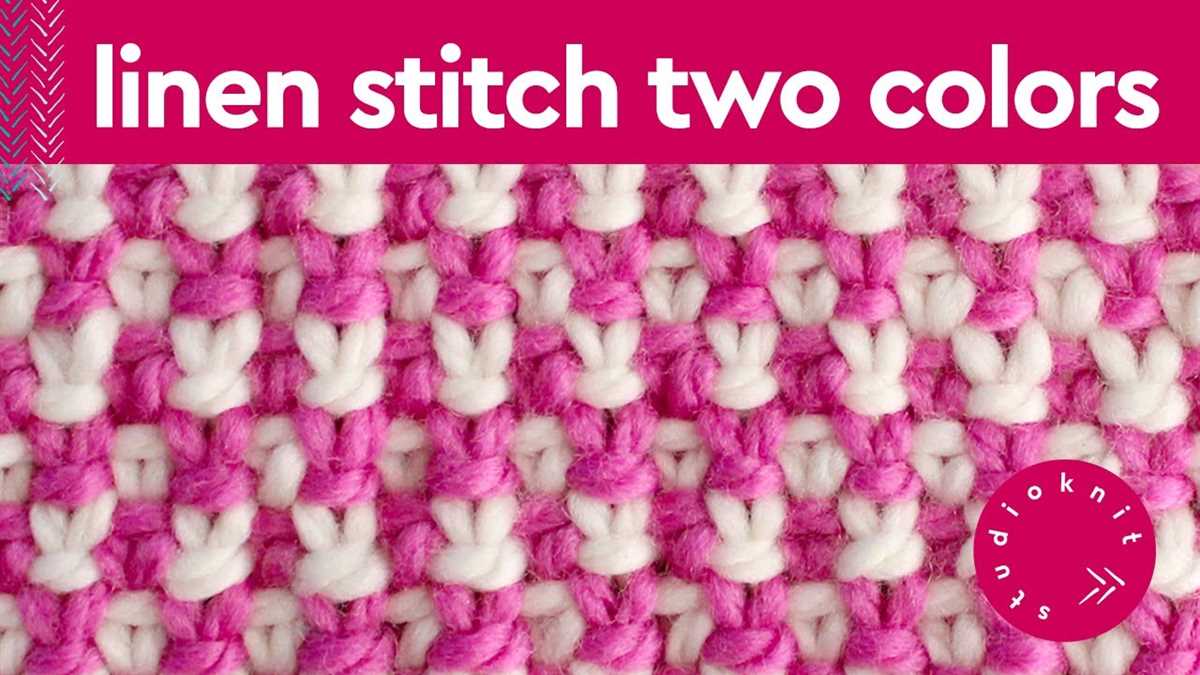
Once you have mastered the basics of simple two color knitting patterns, you may be ready to take on more advanced designs. These patterns often incorporate more complex colorwork techniques and can produce stunning results. Whether you are looking to create intricate motifs or experiment with different color combinations, advanced simple two color knitting patterns offer endless possibilities for creativity and skill-building.
One technique commonly used in advanced simple two color knitting patterns is stranded colorwork, also known as Fair Isle knitting. This technique involves carrying two or more colors of yarn at the same time and working with both colors in each row or round. Stranded colorwork can create beautiful geometric patterns, intricate designs, and rich textures. It can be challenging to maintain an even tension while working with multiple colors, but with practice, you can create stunning finished projects.
Intarsia:
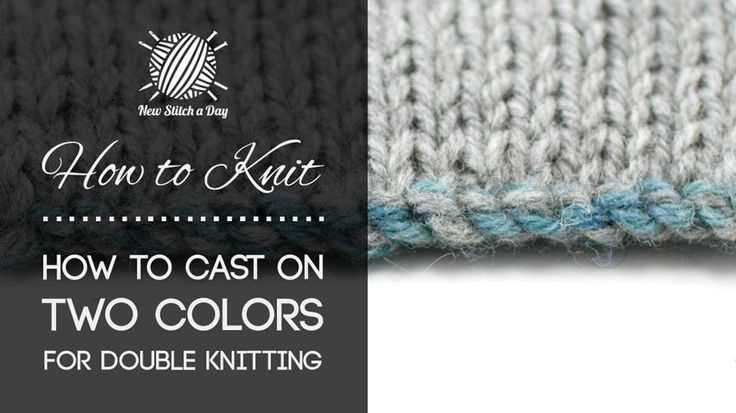
Intarsia is another advanced technique used in simple two color knitting patterns. It involves creating blocks of color by working with separate bobbins or balls of yarn for each color section. Unlike stranded colorwork, where both colors are carried along the back of the work, intarsia allows for uninterrupted shaping and creates bold, distinct color blocks. It is often used to depict images, letters, or other detailed motifs in knitting. Intarsia requires careful attention to yarn management and can be complex, but the results can be truly impressive.
If you are feeling adventurous and ready to challenge your knitting skills, try exploring advanced simple two color knitting patterns. These patterns offer a chance to experiment with new techniques, create unique designs, and showcase your creativity. With practice and patience, you can create beautiful and intricate projects that reflect your personal style and knitting expertise.
Tips and Tricks for Successful Simple Two Color Knitting Patterns
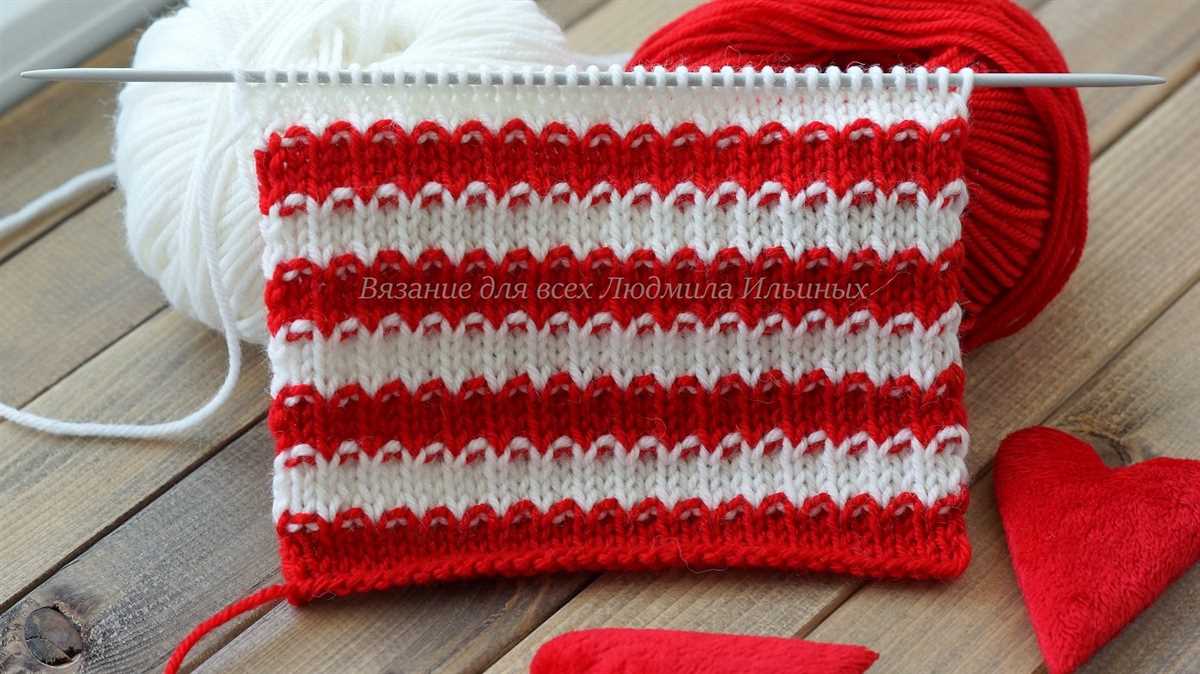
Simple two color knitting patterns can be a fun and rewarding project for knitters of all skill levels. Whether you’re a beginner or an experienced knitter, there are some tips and tricks that can help ensure your project turns out beautifully.
Start with contrasting colors: When choosing colors for your two color knitting pattern, it’s important to select colors that have enough contrast. This will make the pattern more visible and ensure that the two colors don’t blend together. For example, a light color and a dark color or complementary colors are a good choice.
Use the stranded knitting technique: The stranded knitting technique, also known as fair isle knitting, is commonly used for two color knitting patterns. This technique involves carrying both colors of yarn along the back of your work, picking up the yarn you need for each stitch. It’s important to keep the tension of the yarn consistent to prevent puckering or pulling.
Pay attention to yarn dominance: In two color knitting, one color will typically dominate over the other, meaning it will appear more prominently. To ensure the pattern looks as intended, pay attention to which color you hold dominant. Generally, the color you hold on top will be the dominant color.
Swatch before you start: Swatching is always a good idea, especially when working with multiple colors. By knitting a small sample of your pattern before starting the actual project, you can get a better understanding of how the colors work together and make any necessary adjustments.
Weave in your ends carefully: With two color knitting, you will have multiple yarn ends to weave in at the end of your project. Take your time to weave in these ends carefully, ensuring they are secure and won’t come undone. This will give your finished project a polished look.
By following these tips and tricks, you can create stunning simple two color knitting patterns that showcase your skills and creativity. Enjoy the process and have fun experimenting with different color combinations!
Finishing and Caring for Your Simple Two Color Knitting Projects
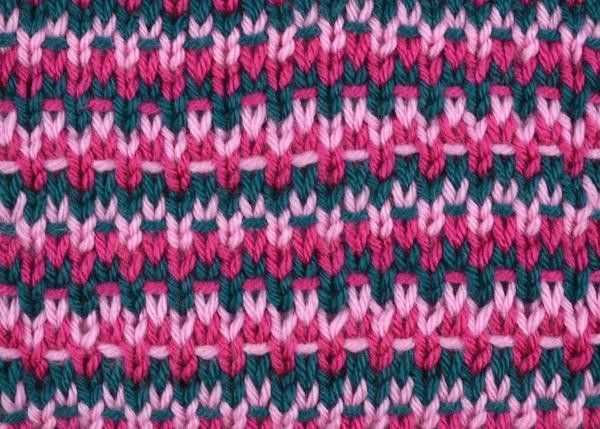
Once you have completed your simple two color knitting project, there are a few finishing steps you can take to ensure that it looks polished and professional. First, weave in any loose ends of yarn using a tapestry needle, being careful to secure them tightly so they do not come undone. This will give your project a neater appearance and prevent it from unraveling over time.
Next, block your project to give it a clean and uniform shape. To do this, soak your finished knitting in lukewarm water with a mild detergent. Gently squeeze out any excess water and lay the project flat on a towel, reshaping it to the desired dimensions. Use pins or blocking wires to hold the edges in place, and leave it to dry completely. Blocking can help to even out any uneven stitches and give your project a professional, finished look.
Caring for your two color knitting projects
To maintain the quality and appearance of your simple two color knitting projects, it’s important to follow proper care instructions. For most yarns, handwashing is recommended to prevent stretching or shrinking. Fill a basin with lukewarm water and a gentle detergent specifically formulated for delicate fabrics. Gently agitate the water to distribute the detergent, then submerge your project and allow it to soak for about 15 minutes. Rinse the item thoroughly with clean water and gently squeeze out excess moisture. Avoid wringing or twisting the project, as this can cause the fibers to stretch or become misshapen.
After washing, reshape your project by laying it flat on a clean towel and gently patting it into the desired shape. Allow it to air dry completely before storing or wearing. Avoid hanging your knitted items, as this can cause them to stretch. Instead, fold them neatly and store them in a cool, dry place to prevent moth damage.
By following these finishing and care instructions, you can ensure that your simple two color knitting projects look their best and last for years to come.